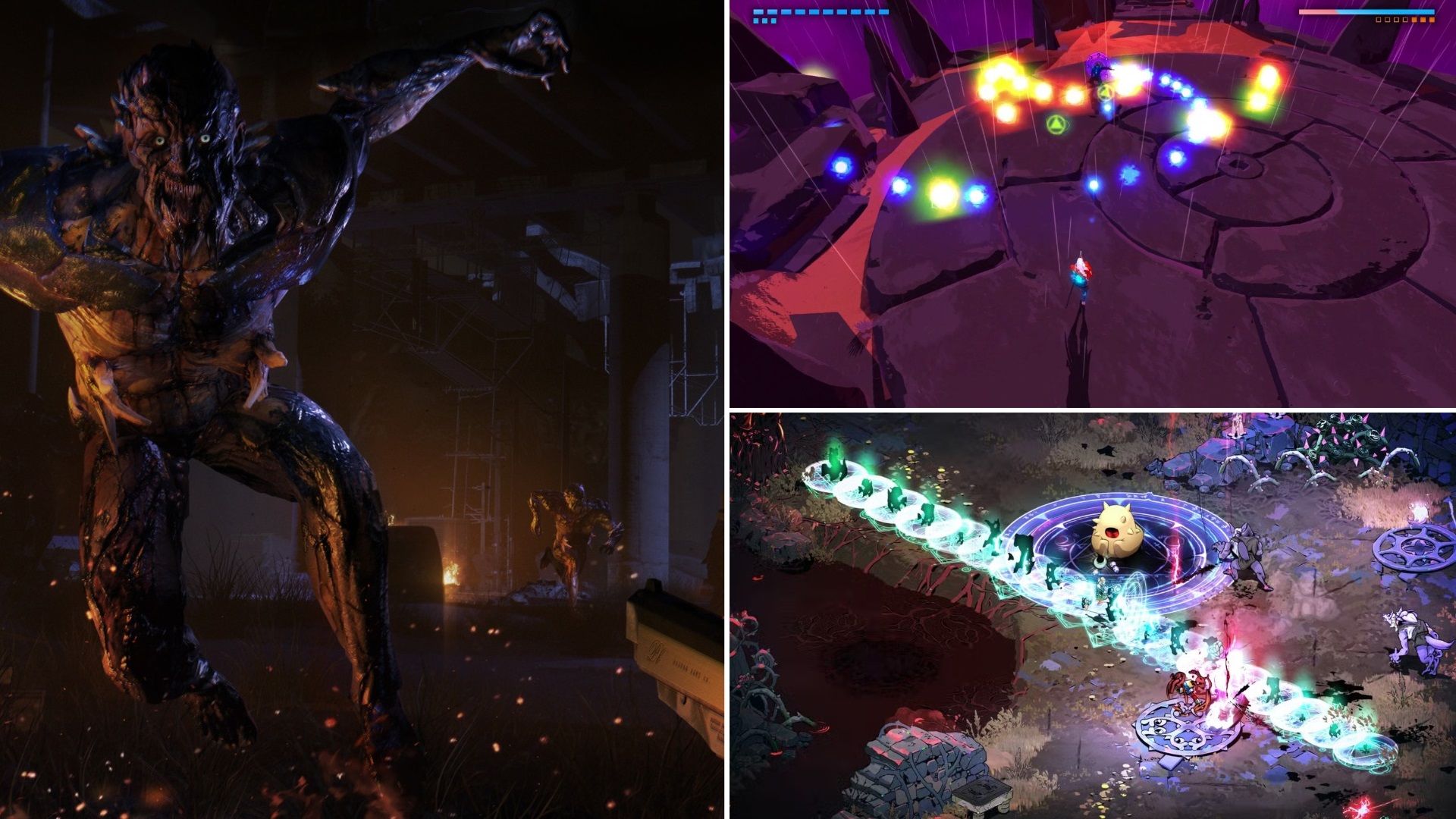
I love playing all sorts of video games, but I especially enjoy the ones that really push you to be aggressive and reward you for playing that way.
Most players don’t enjoy games that constantly force them to take risks, so it’s rare to find a game built entirely around that idea. As a gamer, I often find this frustrating.
But when it really clicks, it’s honestly one of the most amazing things gaming can do. It’s not just about what you see, it’s how it makes you feel – those adrenaline rushes stay with you long after you stop playing. It’s a truly physical experience, and that’s what makes it so memorable for me.
So, to highlight games that really make you feel the impact of your choices, here’s a list of the ten best games featuring exciting risk and reward systems.
10. Metal: Hellsinger
Keeping the Rhythm
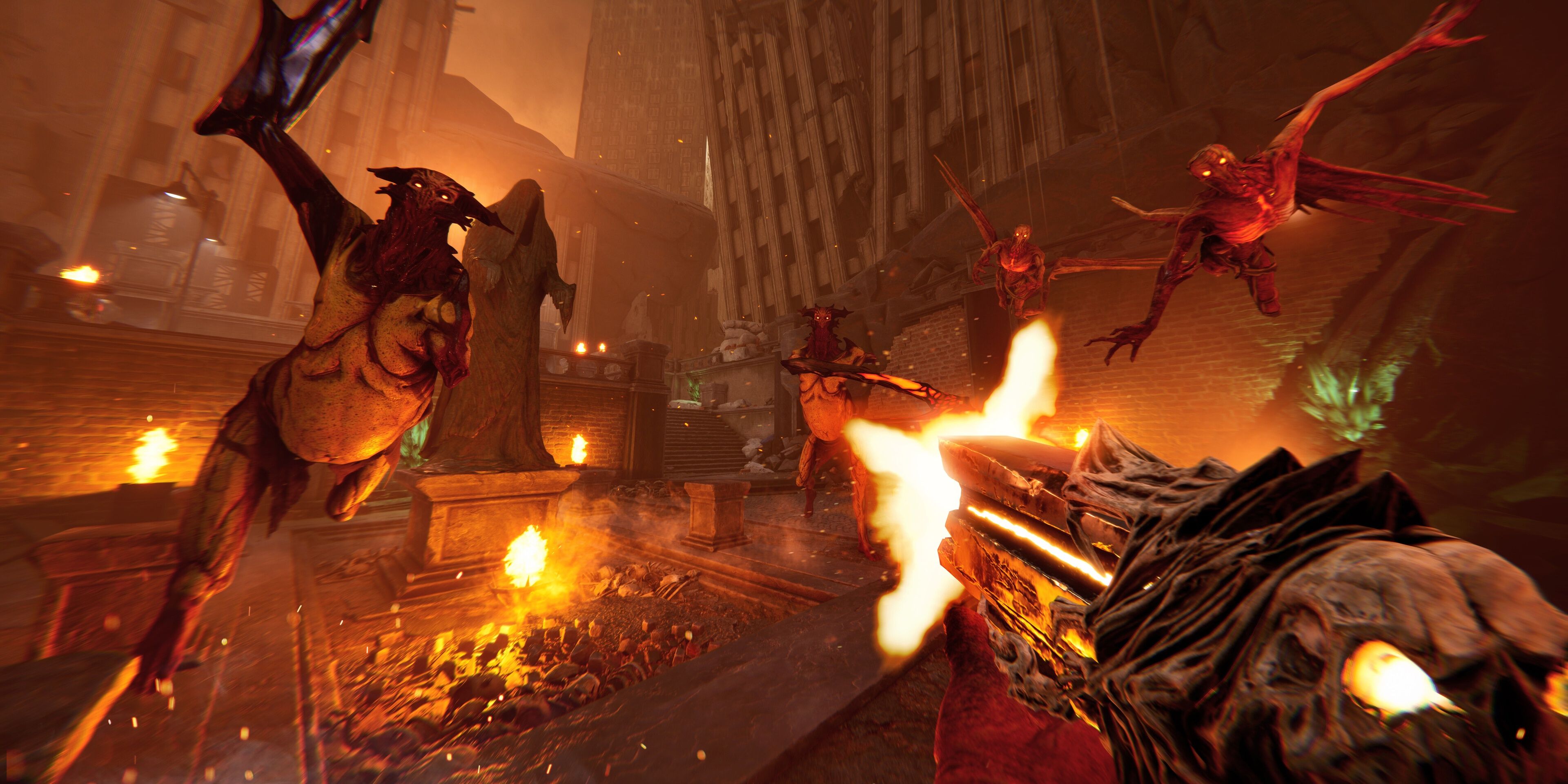
I’m really interested in games that encourage certain playstyles, and few do it as effectively as Metal: Hellsinger. Style meters are a great way to do this, but Metal: Hellsinger stands out.
I think it’s brilliant how the game connects the music to how well you’re doing in battles – it really enhances both the story and the gameplay.
I found myself completely focused on keeping a steady rhythm with my actions – shooting, attacking, and dodging – simply to enjoy the music and maximize my damage. This created a deeply immersive experience, a state of flow I rarely achieve in first-person shooters.
You can only succeed if you stop thinking and just let the music guide you. As soon as you start to analyze what’s happening, you’ll lose concentration. Therefore, you must fully trust your instincts and let the rhythm lead you, believing it will help you overcome any obstacles in your path.
At around three hours long, Metal: Hellsinger feels more like an amazing interactive concert than a typical game. You get to experience one of the best soundtracks ever made while blasting away in a rhythm-based shooter set in hell – and it’s a fantastic combination.
9. Sifu
Power Lies in Old Age
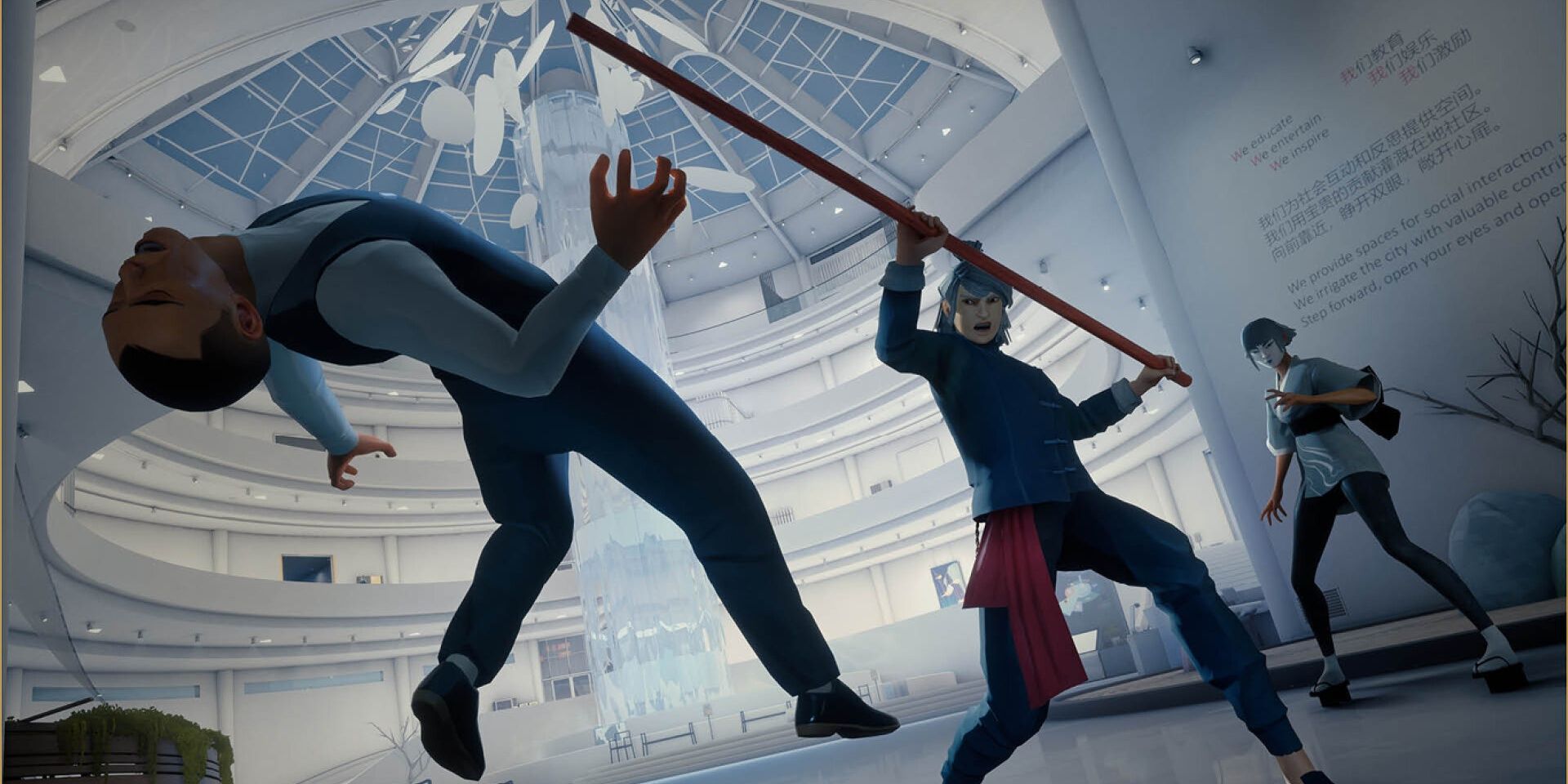
When it comes to immersive experiences, Sifu doesn’t just have incredible combat – it’s uniquely thrilling because of its aging mechanic. The game’s structure, where your character ages with each death, adds a fantastic layer of intensity to the already excellent fighting system.
When your character takes damage during a game, they’ll age, becoming weaker with less health but also stronger in terms of attack power.
As you play longer, you start to feel the pressure because mistakes become more costly. Plus, the enemies and bosses you face later in the game are much tougher than those at the beginning.
It’s easy to find yourself with very little health, accidentally causing damage as you try to survive. Once you get the hang of the game and become skilled at combat, you’ll want to level up and become even stronger.
Sifu is fantastic for many reasons, but primarily because it demands such precise control of its combat system. You’ll find yourself fighting with momentum and flow, even though every move carries a real risk of failure.
8. Hades 2
Overcoming Ignorance

Like other roguelikes, Hades 2 demands both quick reflexes and smart choices. Picking the best upgrades and routes is just as important as knowing how to actually use them in combat. I’ve repeatedly failed runs by playing it safe instead of trying out the more unique and powerful options – those are often cleverly hidden behind unexpected combinations.
The game pushes you to experiment with different abilities through its Fated List of Minor Prophecies, but the real benefit is unlocking each weapon’s full potential. Trying new powers is key to mastering the game’s combat.
Playing with all the different keepsakes and weapon features in Hades 2 reveals that it’s a game with a lot of depth, and truly powerful strategies aren’t obvious at first. It’s not just hard to master—it rewards players who dig deeper to find the best options.
To truly appreciate everything this title has to offer, you need to move beyond the obvious choices and embrace unexpected, even outlandish, possibilities.
7. Dying Light
Let the Night Fear You

The nighttime in Dying Light is truly one of the scariest and most oppressive environments in recent video games, but overcoming that fear is a key part of the experience.
Training under the moonlight is especially beneficial because it significantly speeds up skill progression and provides unparalleled parkour training.
For most of the game, I wasn’t really focused on playing strategically or sneaking around. It wasn’t until nighttime sections started that I realized I’d been approaching things all wrong.
Playing Dying Light is most intense and rewarding at night, and it’s a great way to get ready for the tougher challenges in the expansion packs. Trust me, if you try to play it too cautiously at the start of the main game, you’ll really struggle later on.
6. Road 96
Dare to Believe
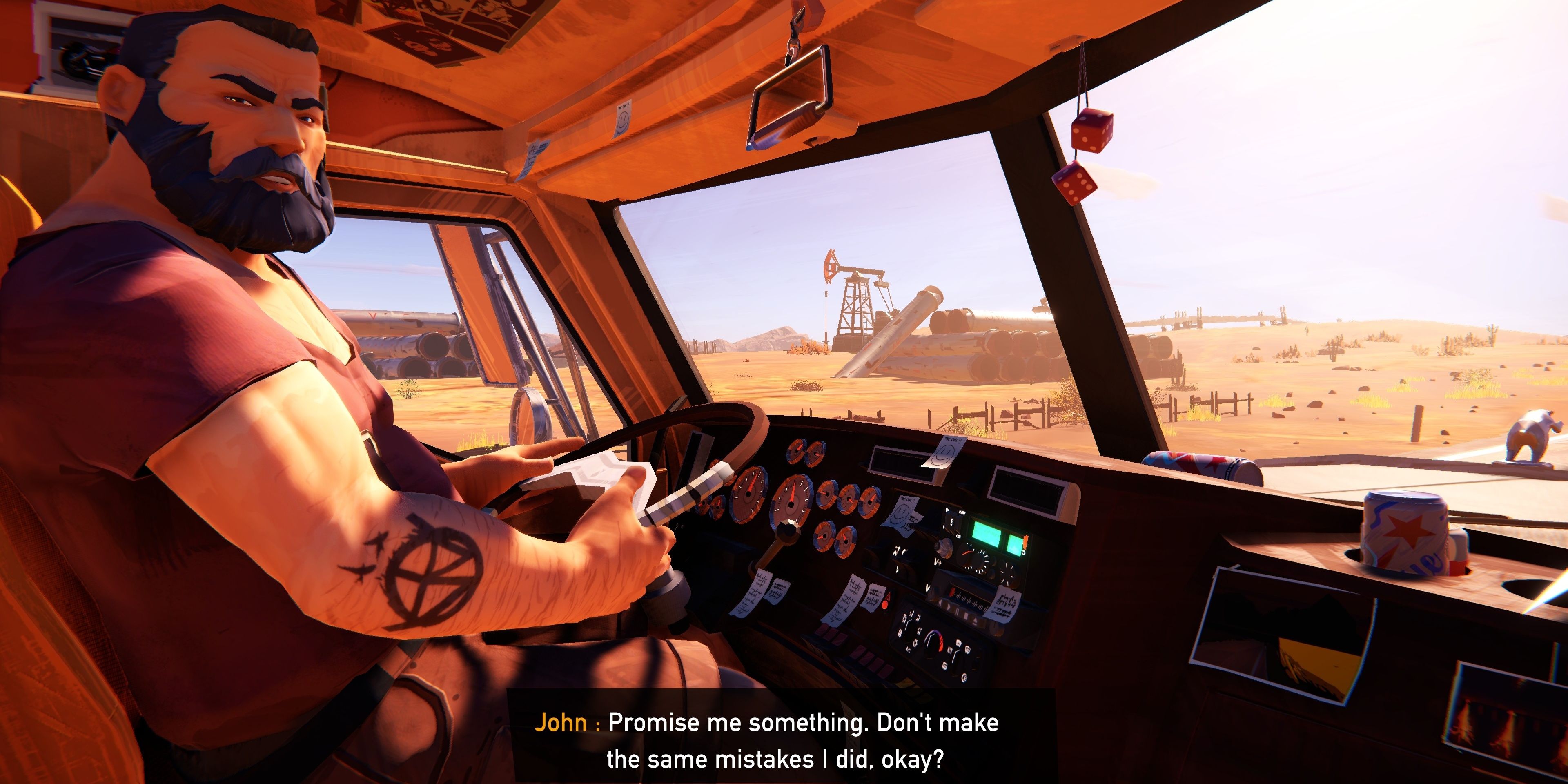
Unlike earlier games, Road 96 rewards taking chances not by making you stronger or a better fighter, but simply because it’s often the only way to get through it.
This game challenges you to cross the border as a backpacker with nothing – no money, supplies, or connections. You’ll have to work hard and make tough choices to survive, as there are no simple solutions.
As a Road 96 fan, let me tell you, this game is all about making tough choices! You’ll constantly be wondering if you can trust the people you meet – that intimidating truck driver, or maybe even a group of shady characters. You’ll even find yourself questioning simple things, like whether to walk instead of taking the bus to save a few bucks. Seriously, the core of Road 96 is taking risks because there’s no such thing as a truly safe decision. Every choice feels like a gamble!
You’ll quickly face difficult choices – like scaling a huge mountain or risking a dangerous border crossing – all while navigating constant threats as you try to finish what you set out to do.
5. Furi
Parry Until You Win

I think Furi is the best boss rush game out there. It was one of the first indie games that really grabbed my attention, and a big part of that was how satisfying its parrying system is.
It may sound like a bold claim, but linking your primary way to heal to attacking is a surprisingly effective design choice. It completely alters your strategy in every fight.
Without typical healing abilities and limited ranged options, you’ll need to fight up close. This means learning each boss’s attacks is essential, as healing opportunities will be scarce.
Don’t bother with cautious tactics, drawn-out battles, or hit-and-run strategies. Furi is built around encouraging incredibly aggressive gameplay, and brilliantly teaches you how to protect yourself while playing that way.
4. Dredge
Fishing in the Cosmos

The idea of nighttime being more perilous isn’t new, but Dredge executes it so well that it doesn’t even seem to notice the cliché.
It’s surprising to see a relaxing game about fishing and managing resources transform into a terrifying cosmic horror experience, particularly given its initially warm and inviting appearance.
Even though it’s dangerous, fishing at night is worth the risk because you can find rare and valuable items. However, be aware that more dangerous creatures will come after you, and you’ll mostly have to rely on escaping to stay safe.
It’s fine if you prefer playing during the day, but it will significantly slow down your progress. To truly enjoy Dredge and experience everything it offers, you’ll need to be brave and confront the challenges of the night.
3. Death Stranding
Making Two Trips Is For Weaklings
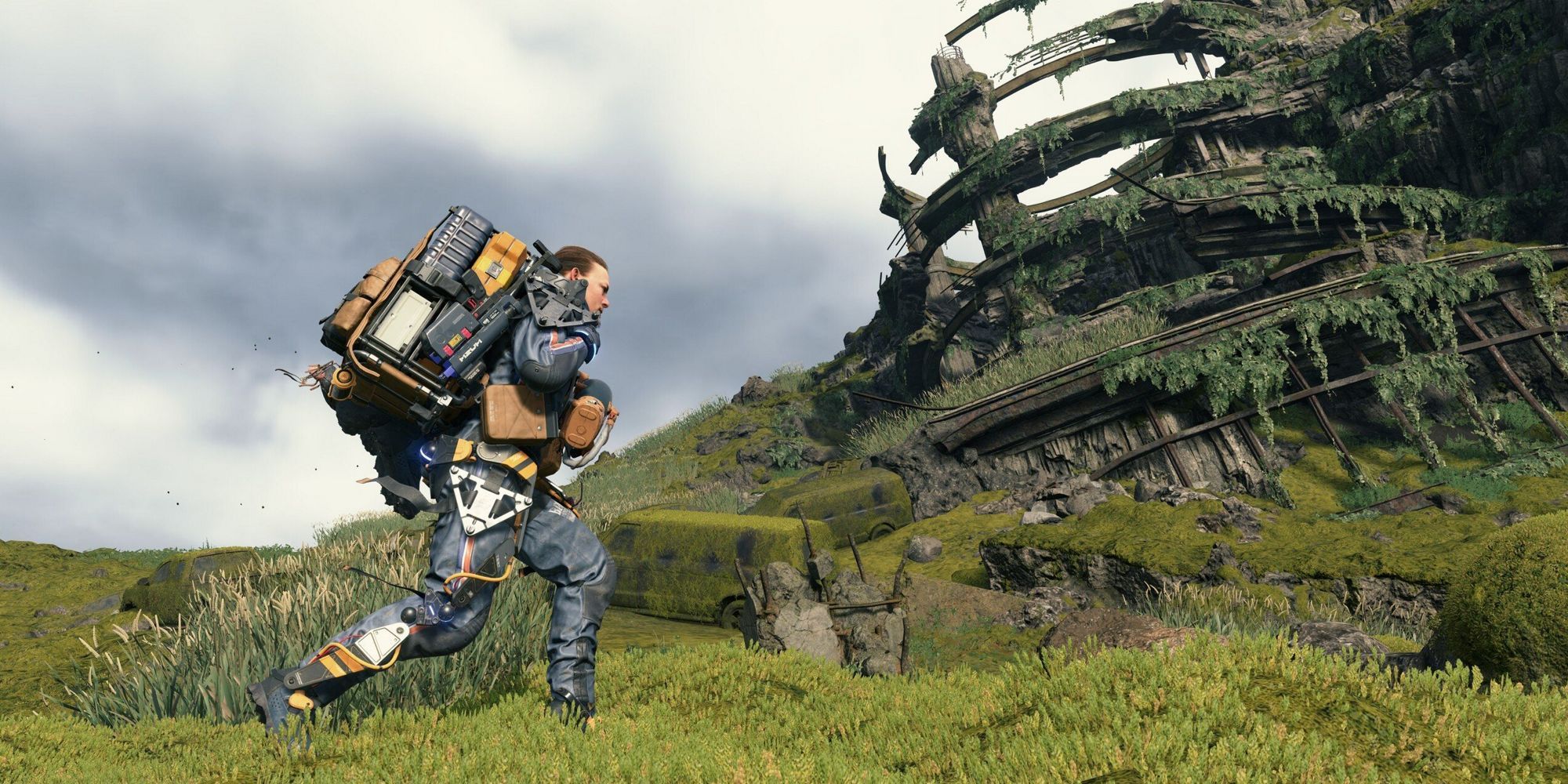
Almost everyone can relate to the struggle of trying to carry all the groceries in one go to avoid another trip. That feeling – balancing a lot at once, risking a drop – is a perfect way to understand the core idea of risk-taking in the unique and amazing game Death Stranding.
Look, the world is rough – seriously, it’s full of hills, acid rain, and ghosts! But the bottom line is this: if I want to get anywhere fast, I have to keep a really close eye on my stamina and what I’m carrying. It’s all about smart resource management if I want to save time.
Don’t underestimate how important it is to carefully pack your armor and choose the best delivery routes. The most rewarding deliveries – the ones that pay the most – are usually the longest distances with the heaviest loads.
Leaving without enough shelter-building supplies, cutting through enemy territory to save time, prioritizing cargo over healing, or trying to make your boots last too long… whether you realize it or not, Death Stranding is full of risky choices that can easily determine if you succeed or fail.
The interesting thing about how things unfold is that even tiny, seemingly insignificant details can have a huge impact. It’s often impossible to know what those small factors were, so you need to be ready for anything, even the most surprising results.
2. Hollow Knight
Survive or Kill

It’s easy to assume that getting players to take risks requires complicated game mechanics. However, as seen in Hollow Knight, a straightforward choice – like making healing dependent on dealing damage – can be surprisingly effective.
Without attacking and collecting soul, you won’t be able to regain your masks, which makes exploring Hallownest incredibly hard. You’ll constantly have to take risks, even in minor fights, just to survive.
When you’re close to dying, simply hiding won’t save you. You need to actively fight to get the supplies you need to heal and get back into the battle with a better chance of winning.
Team Cherry takes this concept even further: the strongest abilities, called spells, also rely on the same limited resource. This significantly increases the challenge, as choosing to use one power means you can’t use the other.
You can choose to play defensively, focusing on healing and extending the battle to improve your odds of winning. Or, you can go all-in with powerful attacks, quickly ending the fight but risking your health. This choice, and the inherent risk, creates a thrilling and intense experience unlike many other games.
1. Bloodborne
Time to Bathe in Blood

After spending more than five years developing a combat system focused on careful, defensive play with shields, FromSoftware surprisingly abandoned most of that work and instead created the fantastic game Bloodborne.
In this situation, you don’t have much defense – your best bet is to stay close to enemies and perfectly time your blocks. To survive, you need to attack constantly and aggressively, even if it feels a bit brutal.
The game lets you regain health by attacking soon after being hit, but the timing is incredibly strict. You either need to risk getting very low on health, or you’ll have to play with the same precision as in the game Dark Souls.
Unlike past games, healing items are limited, and repetitive gameplay isn’t a good way to get more. This means you’ll need to be smart about your health during fights – surprisingly, that often involves taking calculated risks instead of immediately trying to avoid damage.
With the option to deflect attacks using guns, items that boost both your attack power and vulnerability, and temporary buffs, it’s clear: Bloodborne encourages aggressive, high-risk gameplay, and sticking to safer strategies isn’t how the game is meant to be played.
Read More
- They Nest (2000) Movie Review
- Avengers: Doomsday Trailer Leak Has Made Its Way Online
- Brent Oil Forecast
- bbno$ speaks out after ‘retirement’ from music over internet negativity
- ‘M3GAN’ Spin-off ‘SOULM8TE’ Dropped From Release Calendar
- Super Animal Royale: All Mole Transportation Network Locations Guide
- Spider-Man 4 Trailer Leaks Online, Sony Takes Action
- Jynxzi’s R9 Haircut: The Bet That Broke the Internet
- Code Vein II PC system requirements revealed
- Ripple’s New Partner: A Game Changer or Just Another Crypto Fad?
2025-11-07 23:12